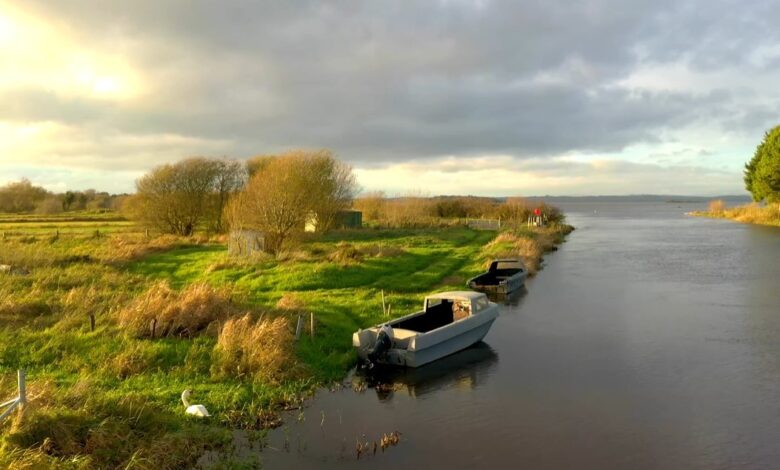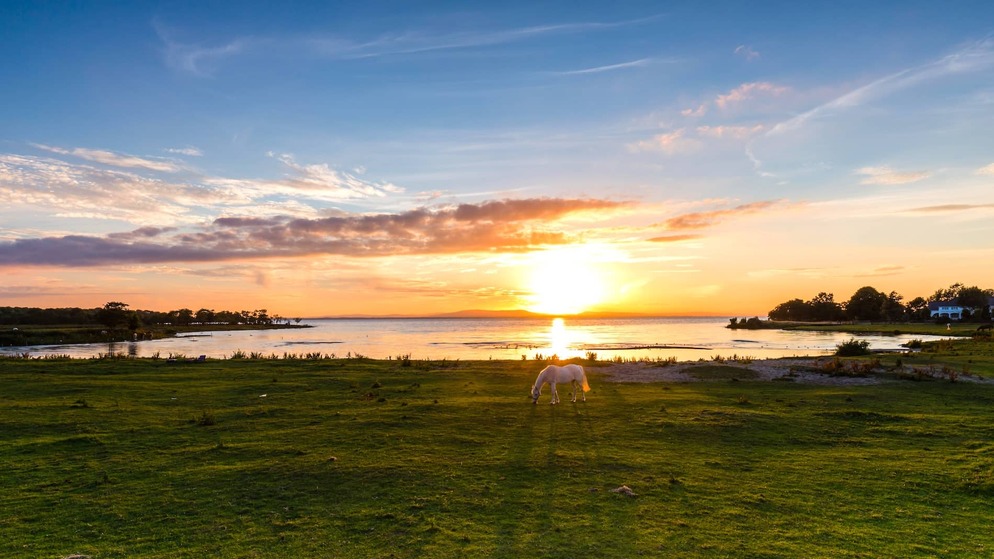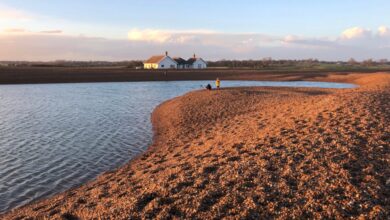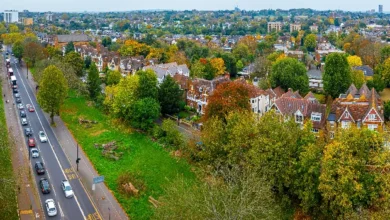How Deep Is Lough Neagh: Facts About Ireland’s Largest Lake

When people ask, “How deep is Lough Neagh?” they are often surprised by the answer. Lough Neagh, located in Northern Ireland, is not only the largest lake in the British Isles by surface area but also a body of water wrapped in mystery, folklore, and natural wonder. While its depth might not be as staggering as the world’s deepest lakes, its size, cultural history, and ecological importance make it a fascinating subject of study.
Situated across five counties—Antrim, Armagh, Tyrone, Londonderry, and Down—Lough Neagh is a defining feature of Ireland’s landscape. For centuries, it has provided water, food, and inspiration to the people who live around it. From ancient legends about giants to modern-day water supply systems, the lake has played an important role in shaping the region’s culture and economy.
In this article, we will not only answer the question of how deep Lough Neagh is but also explore its physical features, environmental significance, folklore, and conservation challenges. By the end, you’ll see why this lake continues to intrigue geographers, historians, scientists, and travelers alike.
Understanding Lough Neagh

Lough Neagh is often referred to as the “heart of Northern Ireland,” both because of its central location and its massive size. It covers around 151 square miles (392 square kilometers), making it the largest freshwater lake in the UK and Ireland. The lake stretches nearly 30 kilometers from north to south and 20 kilometers from east to west, so vast that it resembles an inland sea.
Historically, Lough Neagh has been vital for local communities. It has provided fish as a source of food, peat for fuel, and fresh water for agriculture. In addition, the lake has served as a natural transportation route for centuries, linking towns and trade routes. Its shores have seen human activity for thousands of years, with archaeological discoveries showing settlements dating back to prehistoric times.
Culturally, Lough Neagh is woven into Irish folklore. Stories about its creation, mythical creatures, and supernatural depth have been passed down through generations. While some view it as a natural wonder, others see it as a place of legend where the line between fact and myth is often blurred.
Because of its sheer scale, the lake has often been misunderstood or exaggerated in terms of its depth and origins. This is why answering the question of “how deep is Lough Neagh?” requires not just scientific facts but also an understanding of its cultural and historical context.
How Deep Is Lough Neagh?
Scientifically speaking, Lough Neagh has a maximum depth of about 25 meters (85 feet), with an average depth closer to 9 meters (30 feet). While this may not seem very deep compared to some of the world’s great lakes, its massive surface area means it holds an astonishing volume of water. In fact, Lough Neagh contains nearly 40% of Northern Ireland’s fresh water.
To put this into perspective, many people mistakenly assume that because the lake is so vast, it must also be very deep. However, Lough Neagh is considered a “shallow” lake relative to its size. This shallow depth influences its ecology, water temperature, and even how the lake interacts with weather patterns.
When compared to other lakes in the UK and Ireland, Lough Neagh is unmatched in size but not in depth. For example, Loch Ness in Scotland reaches depths of 230 meters (755 feet), making it far deeper despite being much smaller in surface area. This difference highlights the unique geological history of Lough Neagh, which was formed by glacial and tectonic activity thousands of years ago.
Modern technology, including sonar mapping and satellite imagery, has helped scientists measure the lake’s depth with accuracy. Earlier estimates varied widely due to myths and inconsistent measuring tools, but today’s figures confirm that while vast, Lough Neagh is relatively shallow compared to global standards.
Physical and Environmental Characteristics
Beyond its depth, Lough Neagh is impressive for its physical scale. It covers nearly 400 square kilometers, making it so large that the curvature of the Earth can be observed when standing on its shores. Its catchment area is fed by several rivers, including the Bann, Blackwater, and Ballinderry, which bring water into the lake. The Lower Bann River serves as the lake’s only outlet, flowing northward into the Atlantic Ocean.
The lake’s shallow depth plays a role in its environmental dynamics. It warms quickly during the summer and cools rapidly in the winter, influencing the types of plants and animals that thrive in its waters. Despite being shallow, Lough Neagh supports a rich ecosystem. It is home to eel fisheries, which have operated for centuries, and a variety of fish species such as trout, pollan, and perch. Birdlife is equally abundant, with migratory species using the lake as a seasonal stopover.
Sediment and water quality are ongoing concerns. Agricultural runoff and human activity can impact the lake’s ecosystem, affecting both biodiversity and the quality of drinking water it provides. Efforts to monitor pollution levels and restore ecological balance are crucial to ensuring its sustainability.
For locals, the lake is more than just a body of water. It is a provider of life, a place of recreation, and a landmark that defines the region. Its environmental importance cannot be overstated, especially considering that millions of people depend on it directly or indirectly for water, food, and economic livelihood.
Economic and Social Importance
Lough Neagh’s economic significance is vast. It serves as a primary water supply for over 40% of Northern Ireland’s population, making it one of the most critical natural resources in the region. Its waters are processed to provide drinking water, agricultural irrigation, and industrial use.
Fishing, especially eel fishing, has been central to local economies for centuries. The European eel, once abundant in the lake, has supported both commercial and cultural traditions. Though stocks have declined due to environmental pressures, eel fishing remains a symbolic and practical aspect of life around Lough Neagh.
Tourism also plays a major role. Visitors come to enjoy boat tours, birdwatching, and angling opportunities. The vast shoreline offers scenic landscapes, walking trails, and cultural experiences tied to the lake’s folklore. The lake is also a hub for recreational sports such as sailing, kayaking, and rowing, attracting both locals and tourists alike.
Culturally, Lough Neagh continues to inspire legends and storytelling. From tales of giants who supposedly created the lake to songs and poems celebrating its beauty, it remains deeply embedded in the identity of Northern Ireland. This blend of economic, ecological, and cultural importance makes Lough Neagh far more than just a geographical feature—it is a living heritage.
Myths and Legends About Its Depth
Like many natural wonders, Lough Neagh is surrounded by myths that often exaggerate its depth and origin. One of the most popular legends attributes its creation to the Irish giant Fionn mac Cumhaill (Finn McCool). According to the tale, the giant scooped up a massive chunk of earth to throw at a rival, leaving behind the enormous hollow that filled with water to form Lough Neagh. The chunk of earth he threw is said to have created the Isle of Man.
Folklore also suggests that the lake is “bottomless” or so deep that no one has ever touched its floor. While science disproves this, such stories highlight the awe people have always felt toward the lake. Tales of monsters, enchanted waters, and mystical properties have been passed down through generations, blurring the lines between reality and imagination.
These legends not only reflect the cultural heritage of the area but also show how natural landscapes inspire storytelling. Even today, tourists and locals alike enjoy recounting these myths, adding a sense of magic to the scientific facts of the lake’s actual depth.
Challenges and Conservation Efforts
Despite its grandeur, Lough Neagh faces significant challenges. Pollution from agriculture, invasive species, and industrial activity threaten its ecosystem. Algal blooms, often caused by nutrient runoff, can affect water quality and harm wildlife. Climate change also poses long-term risks by altering rainfall patterns and water temperatures.
Local and international conservation groups are working to protect the lake. Efforts include monitoring water quality, restoring habitats, and raising awareness among communities. Projects to manage fishing stocks and protect bird populations are ongoing, ensuring the lake remains both ecologically healthy and economically viable.
Sustainable tourism and responsible water use are also part of the broader conservation strategy. As more people become aware of the lake’s importance, the need to balance human activity with environmental protection grows stronger. The survival of Lough Neagh as a thriving natural resource depends on collaborative efforts between government bodies, scientists, and local residents.
Conclusion
So, how deep is Lough Neagh? Scientifically, it reaches a maximum depth of about 25 meters, making it relatively shallow despite its enormous size. Yet, when one looks beyond the numbers, the lake is far deeper in cultural, historical, and ecological significance. It is a place where science meets legend, where communities thrive, and where Ireland’s natural beauty is on full display.
From myths of giants to modern-day water supply systems, how deep is Lough Neagh continues to shape the identity of Northern Ireland. Its shallow waters hold a vast world of life, heritage, and challenges that remind us of the importance of preserving such wonders for future generations.
FAQs on How Deep Is Lough Neagh
What is the maximum depth of Lough Neagh?
Lough Neagh’s maximum depth is about 25 meters (85 feet).
How does Lough Neagh compare to other lakes in the UK and Ireland?
It is the largest by surface area but relatively shallow compared to lakes like Loch Ness in Scotland.
Is Lough Neagh man-made or natural?
It is a natural lake, formed by glacial and tectonic activity thousands of years ago.
What rivers flow into and out of Lough Neagh?
Several rivers, including the Upper Bann and Blackwater, flow into it, while the Lower Bann flows out into the Atlantic.
Why is Lough Neagh important for Northern Ireland’s water supply?
It provides nearly 40% of the region’s fresh water, serving homes, industries, and agriculture.
Are there any myths about the depth of Lough Neagh?
Yes, folklore suggests it is bottomless or created by a giant, though science confirms it is shallow.
Can visitors swim or fish in Lough Neagh?
Yes, swimming and fishing are allowed, though safety and regulations must be observed.
You May Also Read: capital city questions



